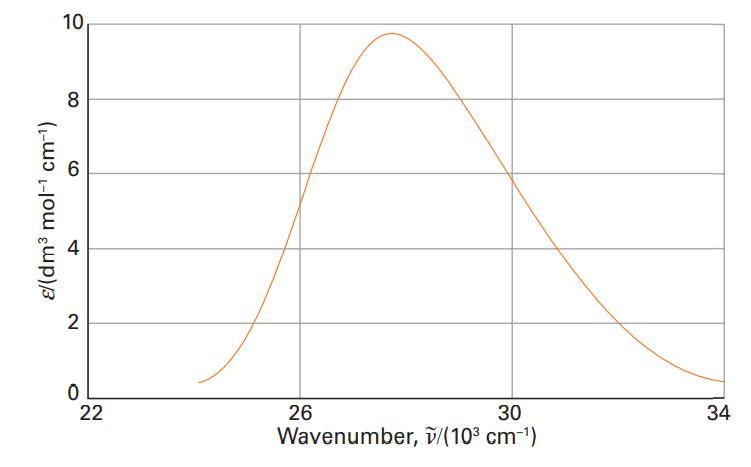Wachewsky et al. (J. Phys. Chem. 100, 11559 (1996)) examined the UV absorption spectrum of CH 3
Question:
Wachewsky et al. (J. Phys. Chem. 100, 11559 (1996)) examined the UV absorption spectrum of CH3I, a species of interest in connection with stratospheric ozone chemistry. They found the integrated absorption coefficient to be dependent on temperature and pressure to an extent inconsistent with internal structural changes in isolated CH3I molecules; they explained the changes as due to dimerization of a substantial fraction

of the CH3I, a process which would naturally be pressure and temperature dependent.
(a) Compute the integrated absorption coefficient over a triangular lineshape in the range 31 250 to 34 483 cm−1 and a maximal molar absorption coefficient of 150 dm3mol−1 cm−1 at 31 250 cm−1.
(b) Suppose 1.0 per cent of the CH3I units in a sample at 2.4 Torr and 373K exists as dimers. Compute the absorbance expected at 31 250 cm−1 in a sample cell of length 12.0 cm.
(c) Suppose 18 per cent of the CH3I units in a sample at 100 Torr and 373K exists as dimers. Compute the absorbance expected at 31 250 cm−1 in a sample cell of length 12.0 cm; compute the molar absorption coefficient which would be inferred from this absorbance if dimerization was not considered.
Step by Step Answer:

Physical Chemistry Thermodynamics And Kinetics
ISBN: 9781464124518
10th Edition
Authors: Peter Atkins, Julio De Paula





